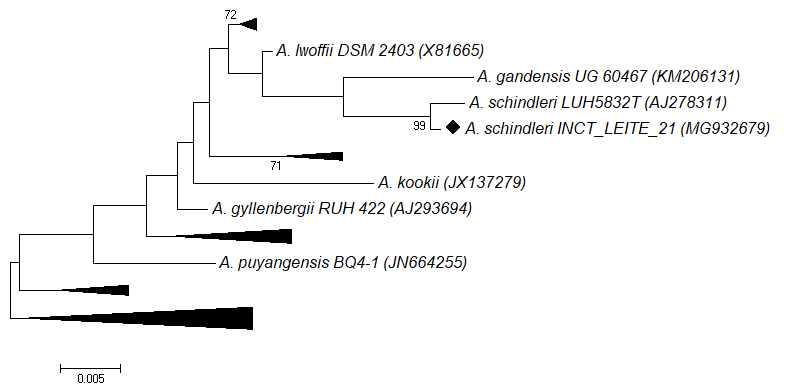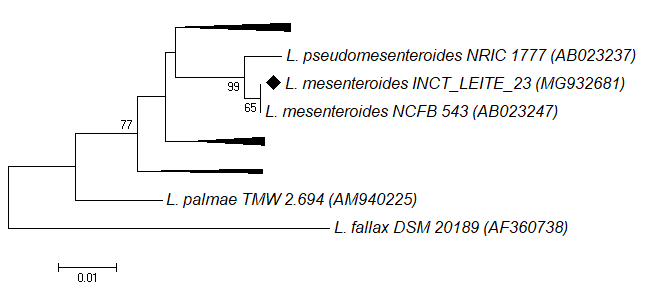ABSTRACT:
The most consumed cheese in Brazil, Minas Frescal cheese (MFC) is highly susceptible to microbial contamination and clandestine production and commercialization can pose a risk to consumer health. The storage of this fresh product under refrigeration, although more appropriate, may favor the growth of spoilage psychrotrophic bacteria. The objective of this study was to quantify and compare Pseudomonas spp. and other psychrotrophic bacteria in inspected and non-inspected MFC samples, evaluate their lipolytic and proteolytic activities and their metalloprotease production potentials. Twenty MFC samples were evaluated: 10 inspected and 10 non-inspected. Counts of psychrotrophic bacteria and Pseudomonas spp., evaluation of the proteolytic and lipolytic potential of the isolates, and identification of potential producers of alkaline metalloprotease (AprX) were assessed. The mean total psychrotrophic counts were 1.07 (±2.18) × 109CFU/g in the inspected samples and 4.5 (±5.86) × 108CFU/g in the non-inspected, with no significant difference (p=0.37). The average score of Pseudomonas spp. was 6.86 (±18.6) × 105 and 2.08 (±3.65) × 106 CFU/g for the inspected and non-inspected MFC samples, respectively, with no significant difference (p=0.1). Pseudomonas spp. represented 0.06% and 0.004% of psychrotrophic bacteria found in inspected and non-inspected MFC samples, respectively. Collectively, 694 psychrotrophic strains and 47Pseudomonas spp. were isolated, of which 59.9% and 68.1% were simultaneously proteolytic and lipolytic, respectively. Of the 470 psychrotrophs isolated from inspected and 224 from non-inspected cheese samples, 5.74% and 2.23% contained aprX, respectively, while 100 and 86.96% of the Pseudomonas spp. isolates in inspected and non-inspected cheese samples contained the gene. The production potential of AprX did not, however, determine the proteolytic activity on plates of these isolates under the conditions evaluated in this study. Of total, 65.63% of the psychrotrophs that contained aprX gene were confirmed as Pseudomonas spp., using genus-specific PCR. Phylogenetic analysis of the 16S rRNA gene of the other psychrotrophs that were potential producers of AprX identified them as Serratia spp. (n=7), Raoultella ornithinolytica (n=1), and Acinetobacter schindleri (n=1) in the inspected samples and Psychrobacter sanguinis (n=1) and Leuconostoc mesenteroides (n=1) in the non-inspected samples. The production conditions of Brazilian MFC of these samples, while meeting the legal determinations, are not sufficient to control Pseudomonas and other spoilage-related psychrotrophs. Thus, stricter hygienic measures are required during the formal production of this type of cheese.
INDEX TERMS:
Pseudomonas spp.; psychrotrophic; microorganisms; Minas Frescal cheese; cheese; AprX production; alkaline metalloprotease; proteolysis; lipolysis

 Thumbnail
Thumbnail
 Thumbnail
Thumbnail
 Thumbnail
Thumbnail
 Thumbnail
Thumbnail
 Thumbnail
Thumbnail




